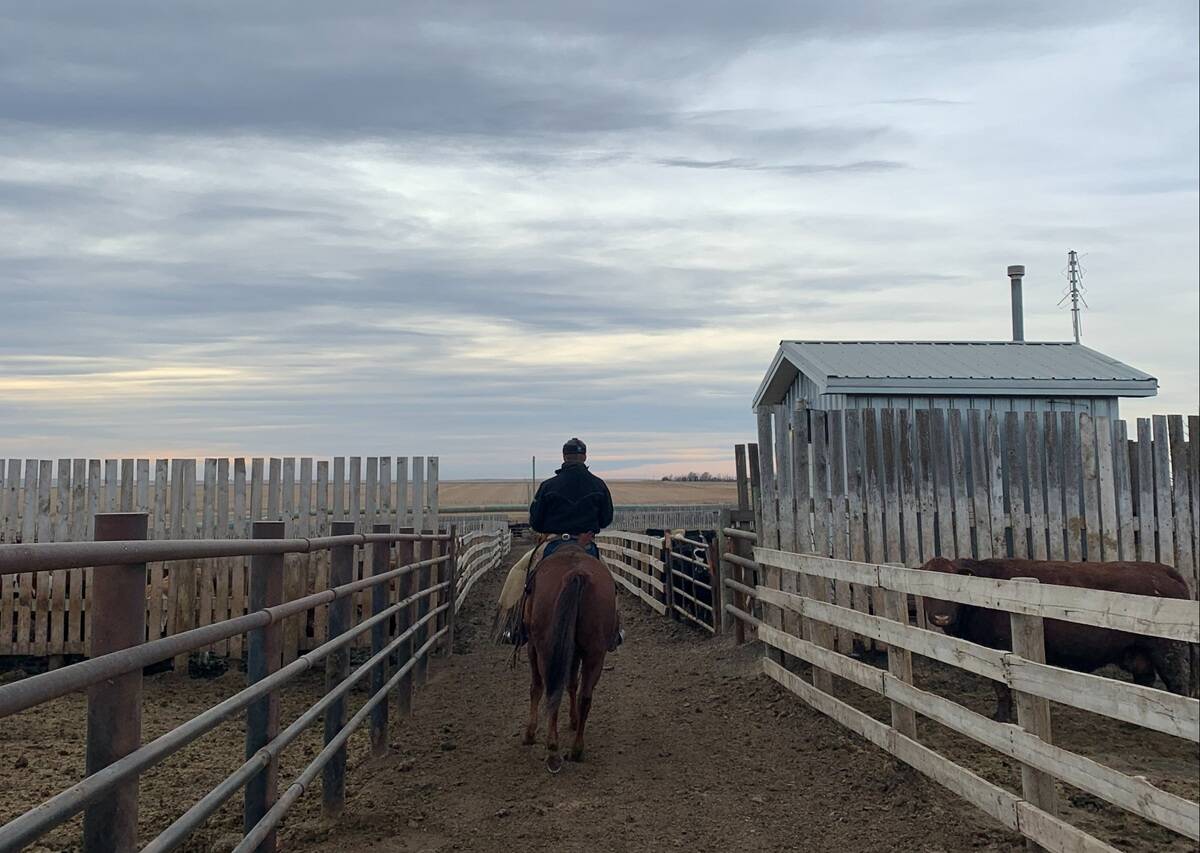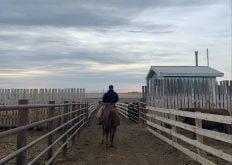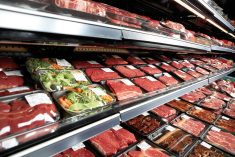With more people eager to buy locally produced food, direct marketing is becoming an attractive option for many Canadian beef producers.
Rachel Herbert, who grass-finishes and direct markets beef with her family at Trail’s End Beef near Nanton, Alta., sees many advantages to this business model. In addition to setting her own price and having a consistent form of marketing, she also finds it very rewarding to know that her family’s hard work results in a quality product enjoyed by their customers.
“There’s a lot of disconnect quite often between the people raising the calves and then the actual consumer eating the beef,” Herbert said, adding that it means a lot to “actually know the family who is going to eat your beef and then get the feedback from them about how thrilled they were with their Mother’s Day steak.”
Read Also

Pen riders still better than tech at detecting respiratory disease in feedlot cattle, says researcher
Recent research found that pen riders are better than tech at flagging signs of BRD in feedlot cattle
This connection provides a human touch and extra encouragement for what can sometimes feel, to many producers, like a thankless job.
“You also get the added benefit of being thanked for your work and having your work recognized through the year,” she said. “We just constantly have people taking us by the hand and saying, ‘thank you for feeding our family.’”
However, trying direct marketing isn’t as simple as booking a butcher date at the local abattoir. There are several important logistics to consider, such as meeting food safety requirements for selling beef and dealing with the customer relations side of sales.
“There’s a lot that goes in with making sure that you’re producing a quality product and that you’re getting it to your customers legally and safely,” said Herbert.
Still, Herbert sees plenty of opportunity for growth within this niche market and doesn’t think an influx of producers taking this route will negatively impact her family’s business.
“I think that there is so much room in this market, particularly for grass-finished beef because there’s a growing demand and an interest for grass-finished product,” she said. “I think that once more and more people get started on buying beef in bulk, they get hooked. It’s addictive to have a freezer full of really good beef…Once you get used to that there’s no going back.”
Maintaining quality is an area of possible concern that Herbert and her butcher have discussed. As more people finish their own cattle for processing, there is the chance that lower-quality beef could result if producers don’t take the time and effort to properly finish their animals. This goes back to factors such as choosing the right genetics, maintaining the health of the cowherd and feeding good-quality hay through the winter.
Herbert predicts quality could become an issue for those interested in finishing cattle on grass, as she’s seen others rush to finish their calves by 18 months of age, in keeping with the traditional finishing methods.
“Grass-finished animals are simply not ready to butcher at that time. They haven’t reached their peak maturity; they need to finish growing their frames so they can start putting on that intramuscular fat and the marbling. So I think there’s a potential to turn people off from direct marketing if the quality isn’t there.”
In addition to high quality, she stressed the importance of being transparent in your marketing.
“If it’s ranch-raised beef, it’s not going out to the auction and picking up some cheap cattle so you can get them for finishing,” she said. “We have some partner ranches that we work with, and that is done all really intentionally to make sure that everyone has the same standards and quality.”
This is the second article of a three-part series. For more information see “Direct marketing beef during a pandemic” and “More small processors needed to fulfill promise of local food movement.”

















